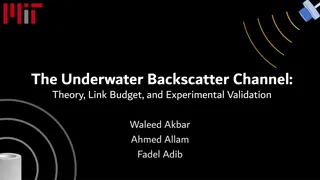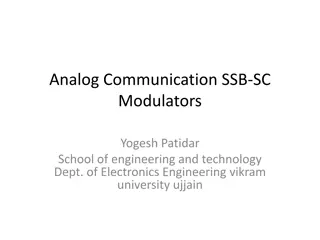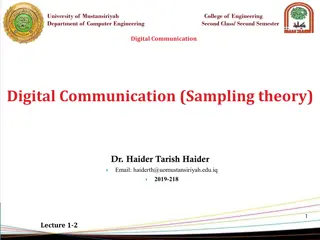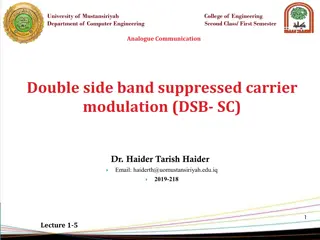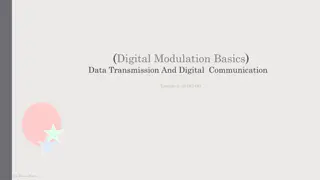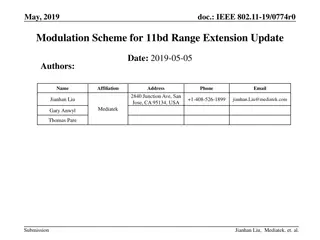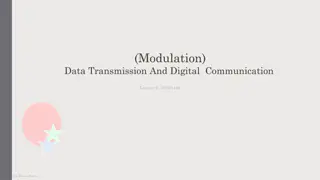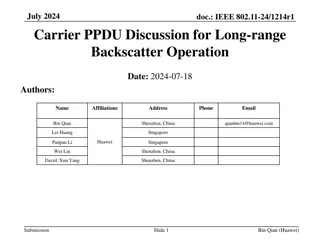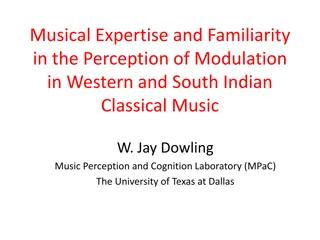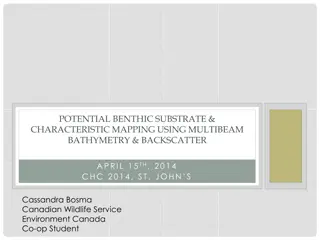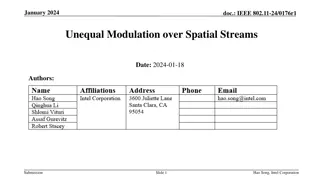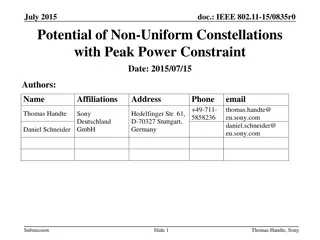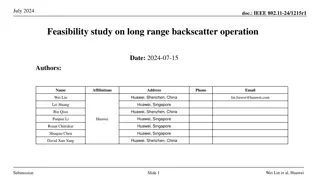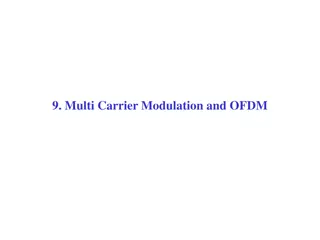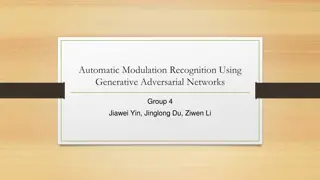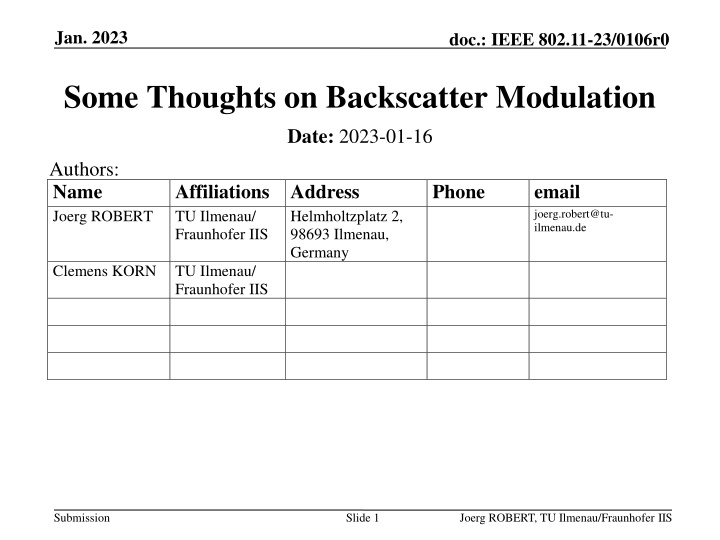
Backscatter Modulation in IEEE 802.11-23 Standard
Explore the concept of backscatter modulation within the IEEE 802.11-23 standard, addressing issues related to frequency regulation and system configurations. Learn about the modulation techniques, theory, and practical aspects of backscatter devices as discussed by Joerg Robert from TU Ilmenau/Fraunhofer IIS.
Download Presentation

Please find below an Image/Link to download the presentation.
The content on the website is provided AS IS for your information and personal use only. It may not be sold, licensed, or shared on other websites without obtaining consent from the author. If you encounter any issues during the download, it is possible that the publisher has removed the file from their server.
You are allowed to download the files provided on this website for personal or commercial use, subject to the condition that they are used lawfully. All files are the property of their respective owners.
The content on the website is provided AS IS for your information and personal use only. It may not be sold, licensed, or shared on other websites without obtaining consent from the author.
E N D
Presentation Transcript
Jan. 2023 doc.: IEEE 802.11-23/0106r0 Some Thoughts on Backscatter Modulation Date: 2023-01-16 Authors: Name Joerg ROBERT Affiliations Address TU Ilmenau/ Fraunhofer IIS Phone email joerg.robert@tu- ilmenau.de Helmholtzplatz 2, 98693 Ilmenau, Germany Clemens KORN TU Ilmenau/ Fraunhofer IIS Submission Slide 1 Joerg ROBERT, TU Ilmenau/Fraunhofer IIS
Jan. 2023 doc.: IEEE 802.11-23/0106r0 Abstract This document briefly introduces the principle of backscatter modulation. Additionally, it shows potential issues wrt. frequency regulation. Submission Slide 2 Joerg ROBERT, TU Ilmenau/Fraunhofer IIS
Jan. 2023 doc.: IEEE 802.11-23/0106r0 Possible Backscatter System Configuration Bi-Static Configuration: Full duplex with other device RX signal of device is ~60dB below RX signal of carrier Mono-Static Configuration: Identical antenna for TX and RX Full duplex with same device RX signal is 100dB below TX signal Submission Slide 3 Joerg ROBERT, TU Ilmenau/Fraunhofer IIS
Jan. 2023 doc.: IEEE 802.11-23/0106r0 Modulation of the Backscatter Device y(?) s(?) Backscatter is done by switching the load of an antenna between two states, e.g. open circuit and shortcut As the load switches between open and shortcut all signals are reflected, but with different phase Ideally, the transmit power of the device is identical to the received power ?(?) The modulation is normally a rectangular carrier with modulated on-off-keying or BPSK for the payload data modulation (e.g. Miller in UHF RFID) The output signal is: ? ? = ? ? ?(?), where s(t) is the AP signal Submission Slide 4 Joerg ROBERT, TU Ilmenau/Fraunhofer IIS
Jan. 2023 doc.: IEEE 802.11-23/0106r0 Some Backscatter Theory ( I / II ) We can describe the square wave by means of a Taylor series (we exclude the DC component) [1]: The corresponding frequency spectrum results in: |X(f)| f -5f0 5f0 -3f0 f0 3f0 -f0 Submission Slide 5 Joerg ROBERT, TU Ilmenau/Fraunhofer IIS
Jan. 2023 doc.: IEEE 802.11-23/0106r0 Some Backscatter Theory ( II / II ) The multiplication in the time domain leads to a convolution in the frequency domain [2]. |S(f)| AP TX Signal f fs |Y(f)| Backscattered Signal f -5f0+fs 5f0+fs -3f0+fs f0+fs 3f0+fs -f0+fs Submission Slide 6 Joerg ROBERT, TU Ilmenau/Fraunhofer IIS
Jan. 2023 doc.: IEEE 802.11-23/0106r0 What does the AP Receive? AP TX Signal e.g. 100dB for monostatic, 60dB for bistatic f -f0+fs fs -5f0+fs 5f0+fs -3f0+fs f0+fs 3f0+fs A higher f0 simplifies the decoding, but increases the out of band emissions problems with frequency regulation The bandwidth of classical UHF-RFID readers is typically very low (CW) Submission Slide 7 Joerg ROBERT, TU Ilmenau/Fraunhofer IIS
Jan. 2023 doc.: IEEE 802.11-23/0106r0 Summary Backscatter modulation typically uses a rectangular modulation The rectangular modulation with frequency f0 shifts the backscatter-signal out of the original AP TX signal simplifies decoding Backscatter modulation typically at least doubles the spectrum, additional harmonics are typically present Issues with the frequency regulation (e.g. in Europe) Submission Slide 8 Joerg ROBERT, TU Ilmenau/Fraunhofer IIS
Jan. 2023 doc.: IEEE 802.11-23/0106r0 References [1] https://en.wikipedia.org/wiki/Fourier_series [2] John G. Proakis, and Masoud Salehi. Digital communications. McGraw-Hill., 2008. Submission Slide 9 Joerg ROBERT, TU Ilmenau/Fraunhofer IIS

